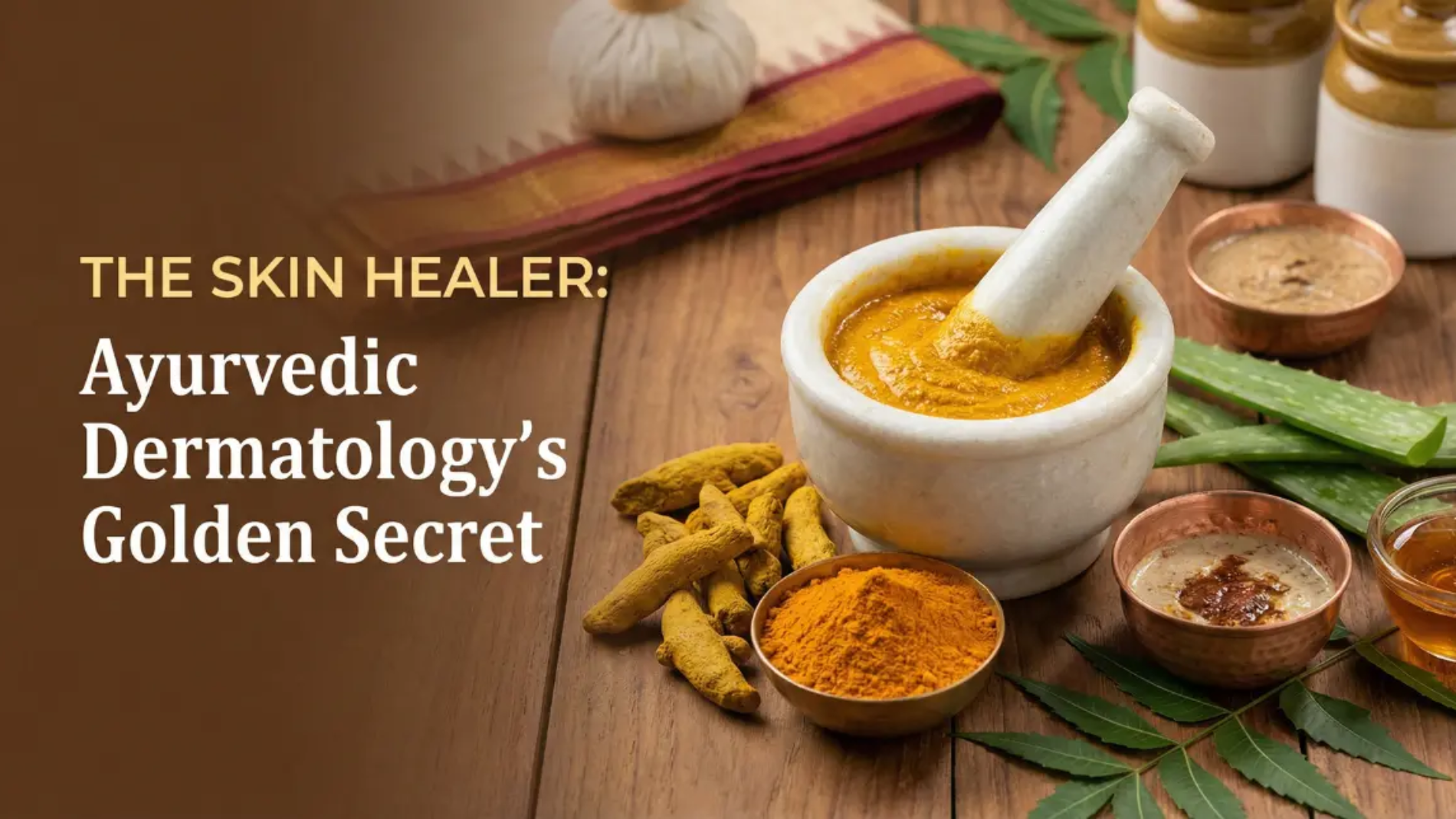In the ancient science of Ayurveda, turmeric (Haridra) is revered not just as a spice, but as a “Varnya”—a herb that enhances complexion and radiance. However, any Ayurvedic practitioner will tell you that the efficacy of a treatment depends entirely on the potency of the herb used. This is where Alleppey Turmeric steps into the spotlight.
For nutraceutical manufacturers and Ayurvedic skincare brands, sourcing generic turmeric is no longer enough. To deliver real, visible results for skin conditions ranging from acne to psoriasis, the industry is shifting toward the “gold standard” of potency: Alleppey Turmeric for Ayurvedic medicine. With a natural curcumin content of 5-7% (compared to the 2-3% in standard varieties), it is the high-performance engine that powers effective dermatological formulations.
The Potency Factor: Why Curcumin Content Matters for Skin
At the heart of turmeric’s healing power is curcumin, the bioactive compound responsible for its anti-inflammatory, antioxidant, and antimicrobial properties. In dermatology, inflammation is the root cause of most skin issues, including acne, eczema, and premature aging.
Standard turmeric powders often lack the punch required to subdue chronic inflammation effectively. Alleppey turmeric, sourced from the mineral-rich soils of Kerala, naturally contains double or triple the curcumin of other varieties.
For Acne: High curcumin levels aggressively combat Propionibacterium acnes bacteria while reducing the redness and swelling of active breakouts.
For Anti-Aging: Its superior antioxidant profile neutralizes free radicals faster, protecting collagen and preventing fine lines.
For Healing: It accelerates wound healing by modulating the body’s inflammation response, a property known in Ayurveda as Vranaropana.
Spice Up Your Business with Authentic Indian Flavors
Import and Export Excellence from India!

Key Ayurvedic Formulations Using Alleppey Turmeric
To truly understand the value of this spice, we must look at how it supercharges traditional Ayurvedic formulations.
1. Haridra Khanda (For Skin Allergies & Hives)
Haridra Khanda is a famous classical formulation used to treat urticaria (hives), itching, and allergic skin rashes. It relies heavily on turmeric as the primary active ingredient. Using medicinal-grade Alleppey turmeric in this formulation ensures a potent antihistamine effect, providing faster relief from itching (Kandughna) and inflammation than standard grades could achieve.
2. Mukha Lepa (Therapeutic Face Packs)
In Ayurveda, a Mukha Lepa is a medicinal face paste used to treat local skin issues. When formulating a lepa for acne or hyperpigmentation, the “scraping” (Lekhana) action of turmeric is vital. Alleppey turmeric’s high essential oil content, combined with its curcumin, makes it more effective at penetrating the skin barrier to clear clogged pores and lighten dark spots (Vyanga).
3. Nishamalaki (For Metabolic Skin Issues)
While primarily for diabetes, Nishamalaki (a combination of turmeric and Amla) is crucial for treating skin infections like boils and carbuncles that plague those with high blood sugar. The high curcumin content helps purify the blood (Raktashodaka) and fight systemic infection from the inside out.
Why "Varnya" Herbs Need High Quality Sourcing
In the Charaka Samhita, turmeric is classified as a Varnya herb—one that restores the skin’s natural glow and health. However, this effect is diluted if the turmeric is old, adulterated, or low in volatile oils.
Alleppey finger turmeric is prized not just for curcumin, but for its rich oleoresin content (the natural oils). These oils are vital for maintaining skin moisture and elasticity. When brands use low-grade, dry turmeric powder, they lose this “unctuous” quality that is essential for preventing dry, flaky skin conditions like psoriasis.
Sourcing for Efficacy: A B2B Perspective
For manufacturers of Ayurvedic medicines and skincare products, the choice of raw material is a direct determinant of brand reputation.
Traceability: Authentic Alleppey turmeric has a specific deep orange-yellow hue. Sourcing from certified exporters ensures you aren’t getting “Madras” turmeric dyed to look like Alleppey.
Consistency: Medical formulations require precise dosing. Using a standardized high-curcumin variety ensures that every batch of your Ayurvedic skincare cream or capsule delivers consistent therapeutic results.
Clean Label: With the rise of “clean beauty,” consumers demand purity. Alleppey turmeric’s premium status often comes with better quality control, ensuring low heavy metal and pesticide residues—critical for products applied to the skin or ingested for health.
Spice Up Your Business with Authentic Indian Flavors
Import and Export Excellence from India!

In the world of Ayurvedic dermatology, turmeric is the “Skin Healer.” But to unlock its full potential—to truly heal, brighten, and protect—one must use a tool that is sharp and potent. Alleppey turmeric is that tool. For brands and practitioners serious about efficacy, it is not just an option; it is an essential ingredient for delivering the true promise of Ayurveda.
Frequently Asked Questions (FAQs)
1. Why is Alleppey turmeric considered better for skin than regular kitchen turmeric?
Regular kitchen turmeric typically has a curcumin content of 2-3%. Alleppey turmeric boasts 5-7% curcumin. This higher concentration makes it significantly more potent at fighting inflammation, bacteria, and oxidative stress on the skin.
2. Can Alleppey turmeric stain the skin more than other varieties?
Yes, due to its high curcumin content and deep orange colour, it can leave a stronger stain. However, this is a sign of its potency. The stain is temporary and can be removed with a simple oil cleanser or toner.
3. Is Alleppey turmeric safe for sensitive skin?
Generally, yes. Its anti-inflammatory properties can actually soothe sensitive skin. However, because it is potent, it should always be patch-tested and ideally mixed with a soothing base like yogurt, honey, or aloe vera.
4. What is “Haridra” in Ayurveda?
“Haridra” is the Sanskrit name for turmeric. In Ayurvedic texts, it is described as a key herb for blood purification (Raktashodaka) and skin health (Kusthaghna).
5. Can I use Alleppey turmeric powder for DIY face masks?
Absolutely. A pinch of Alleppey turmeric mixed with chickpea flour (besan) and yogurt makes for a powerful, spa-grade face mask that rivals expensive treatments for brightening and acne control.
6. Does Alleppey turmeric help with eczema?
Yes. Its strong anti-inflammatory and anti-itch (Kandughna) properties make it excellent for soothing the redness and irritation associated with eczema and atopic dermatitis.
7. How do I know if I am buying genuine Alleppey turmeric?
Look for a deep, rich orange-yellow colour (not bright lemon yellow). For bulk buyers, always request a Certificate of Analysis (COA) verifying the curcumin content is above 5%.
8. Is this turmeric suitable for internal consumption for skin health?
Yes. In Ayurveda, skin health often starts from within. Consuming Alleppey turmeric (e.g., in Golden Milk or capsules) purifies the blood and reduces systemic inflammation, which reflects as clear, glowing skin.
About us
We bridge the gap between local producers and global markets, ensuring seamless trade facilitation with exceptional quality and reliability. We provide quick delivery services with customized packaging with all approval of International Certificates (Spices board India, MSME, IEC, fssai, FIEO, APEDA, EU certification, FDA and Many More)
Contact us
Shop No. 3, Ganesh Prestige Sr. No. 2/15, Near Laxmi Jewellers, Dhanakawadi, Pune – 411043, Maharashtra INDIA.
Call On
+91 9545205050
+91 9822422584



Leave A Comment